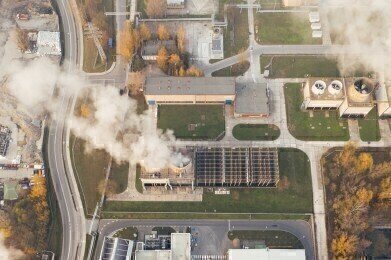Air monitoring
What is Atmospheric Dispersion Modeling?
Jan 07 2015
An incident on the 26th April 1986 sent shivers around the world — Chernobyl. During a reactor test, the reactor reached unstable conditions and an explosion damaged the reactor core’s shielding and the building housing the reactor. This explosion and subsequent graphite fire released large quantities of radioactive gases and particles into the atmosphere.
The accident and its aftereffects affected many thousands of people — both locally and over a wider area. The radioactive plume was initially carried away by westerly and northerly winds — before wind and rain dispersed and deposited the radiation over a large part of Europe, including the United Kingdom. In the initial days after the incident the UK government was able to reassure the public that they would not be exposed to the radiation.
They did this by using modelling — atmospheric dispersion modelling.
What is a model?
The models used for atmospheric dispersion modelling follow the iterative process of many mathematical models. The process is simple and follows the pattern:
- Specify the model’s purpose.
- Create the model — state assumptions, choose variables and define variable relationships.
- Do the maths — solve the equations, draw graphs and get the results.
- Interpret the results.
- Evaluate the model — does the model compare with reality?
- Refine the model — and start the process again.
The process is simple, but dispersion patterns are complex with large data sets and rely on weather patterns — and the weatherman is always right.
NAME and Supercomputers
Atmospheric dispersion models inform us how atmospheric pollutants or particles might disperse, and how air quality is affected by the emissions as discussed in this article: Air Quality Assessment and Air Pollution Zoning of Hanoi Using Air Quality Index. One of the main atmospheric dispersion modellers in the UK is the Met Office.
After Chernobyl the Met Office put together a model that became known as the Numerical Atmospheric-dispersion Modelling Environment or NAME. It can simulate many dispersion processes and associated chemical and physical processes by tracking model particles through a modelled atmosphere. Since its initial design the model has undergone many changes: some because of model improvements based on the iteration process discussed above, and some because of the massive improvements in computing power over the past few decades.
In October 2014 the Met Office announced that it will be getting a new £97m supercomputer to allow the UK to become a world leader in weather and climate prediction. To make dispersion models more accurate and to give better predictions means using models with much higher resolution — this means more data to crunch — so more computing power is needed.
In recent years NAME has been used for many situations including modelling volcanic ash cloud dispersion and predicting air quality in the UK so warnings can be issued to the public.
Dispersion models can also be used for local situations too. Planning decisions regarding processes with emissions might use dispersion models to predict whether they will cause a nuisance to the local population.
Digital Edition
IET 35.2 March
April 2025
Air Monitoring - Probe Sampling in Hazardous Areas Under Extreme Conditions - New, Game-Changing Sensor for Methane Emissions - Blue Sky Thinking: a 50-year Retrospective on Technological Prog...
View all digital editions
Events
Jun 08 2025 Denver, CO, USA
Jun 09 2025 Raleigh, NC, USA
Jun 10 2025 Toulouse, France
Jun 11 2025 Copenhagen, Denmark
Jun 17 2025 Guangzhou, China











.jpg)







